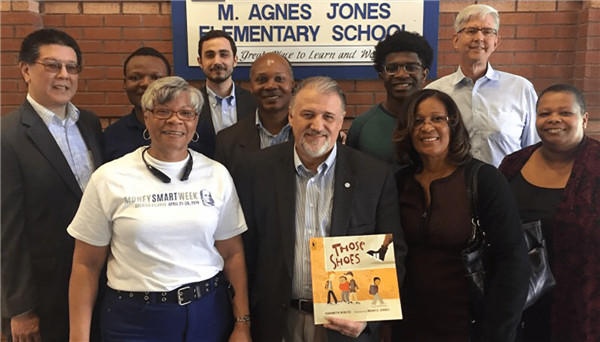Plugging the Financial Literacy Gap: Start Early
Plugging the Financial Literacy Gap: Start Early
By Paul McCaffrey Posted In: Drivers of Value, Economics, Future States, Leadership, Management & Communication Skills, Standards, Ethics & Regulations (SER)The US financial literacy deficit is a problem hiding in plain sight. Evidence of its presence is so abundant and obvious that it blends into the landscape. Few acknowledge its existence, and even fewer seek to address it. But we all live with its consequences.
The FINRA Foundation Report “Financial Capability in the United States 2016” offered a glimpse into the scope of the problem.
Over 60% of survey participants could not correctly answer more than three of five basic financial literacy questions. These knowledge gaps were accompanied by poor decision making: More than one in four of those surveyed accessed high-interest payday loans or similar nonbank lending, while 32% paid only the monthly minimum on their credit card bills.
This knowledge gap and the associated bad choices exact a steep cost, not only in human terms, but also on the larger economy and the financial markets.
But the scale of the problem also means that the opportunity is enormous. Just a little progress can go a long way. The question is, What can be done to address the financial literacy gap? What does an effective program look like?
And that’s where CFA Society Atlanta, formerly the Atlanta Society of Finance and Investment Professionals (ASFIP), and the ASFIP Foundation come in. Last year, we explored their innovative Georgia-focused initiative to give young adults and college students a “booster shot” of financial education. This year, to mark Financial Literacy Month, we caught up with them again and found they have taken their volunteer efforts a step further.
“We had a conversation with Atlanta Federal Reserve Education group about the needs in Georgia,” ASFIP Foundation President Stephen Davenport, CFA, explained. “They talked about getting students started early.”
And by early, they meant very early — elementary school, five to eight years old. The theme the group recommended the CFA Society Atlanta and ASFIP Foundation volunteers emphasize with students was a simple one: needs versus wants.
From there, the volunteers partnered with a host of community groups, My Right Path, Money Smart Week, and Georgia Literacy, as well as student volunteers from Spelman College and Georgia State University. They then identified captivating, age-appropriate books to read to students in the classroom.
“The general idea was to start young, start small, one school at a time, and tell age-relevant stories that would be engaging and encourage ongoing conversations with teachers, parents, and other caring adults to underscore the life lessons,” said Celia Anderson, CFA, a CFA Society Atlanta board member and foundation volunteer. “Those lessons have focused on parsing between wants and needs, sharing with friends, not feeling obligated to ‘keep up with the Joneses’ in terms of spending habits, working hard, and being flexible and creative in problem solving.”
In Anderson’s classroom readings, she has featured two books, Those Shoes by Mariebeth Boelts and illustrated by Noah Z. Jones and Count on Pablo by Barbara deRubertis and illustrated by Rebecca Thornburgh. Each was recommended by the Consumer Financial Protection Board (CFPB).
Those Shoes is about a boy who is envious of his classmates’ expensive sneakers but comes to realize that true friendships are not based on material possessions.
After the reading, the students discuss the book with their teacher and volunteer and then are given the book to take home.

“We envisioned these young college women reading to students in their neighborhood,” Davenport said. “The elementary students learn from the reading, take the book home, and see a role model for their future success.”
Having the students take the book is a critical part of the program. Some of the areas where they conduct the readings average one book for every 13 households. So each book has the potential to improve financial literacy for the whole family.
“We have distributed 400 books (20 classes) last year, and our plan is for 1000 (50 classes) books this year.” Davenport said. “We are looking at partnering with financial service firms to have them ‘adopt’ the schools in their neighborhood. We want to cover all the students in Atlanta for a particular grade (about 4200 students).”
For $100, a volunteer can purchase 20 books, which is enough for a whole classroom.
For their part, CFA Society Atlanta, the foundation, and their community partners know their efforts may take years, even decades, to realize their full potential. “I look at our efforts as a series of investments,” Davenport said. “When we work with college students, the payback could be in a few months. With high school students, the payback is over several years. For these elementary students, payback may be 12 to 15 years away. But as investors, we know that the longer the investment term, the higher the likely return.”
Anderson agreed: “Our hope is that we are planting some seeds to increase the odds of wiser decision making in the future.”
If you liked this post, don’t forget to subscribe to the Enterprising Investor.
All posts are the opinion of the author. As such, they should not be construed as investment advice, nor do the opinions expressed necessarily reflect the views of CFA Institute or the author’s employer.
Image courtesy of the ASFIP Foundation
Continuing Education for CFA Institute Members
Select articles are eligible for continuing education (CE) credit. Record credits easily using the CFA Institute Members App, available on iOS and Android.